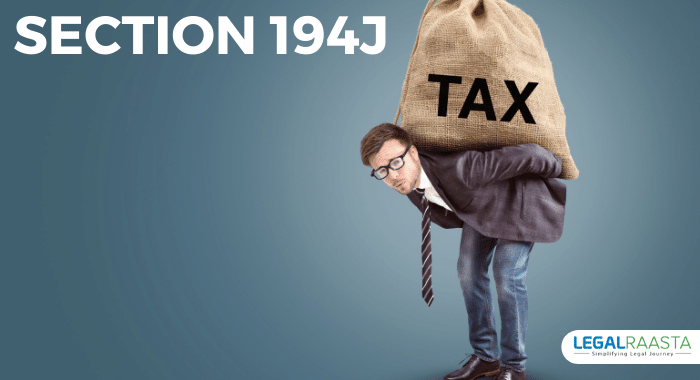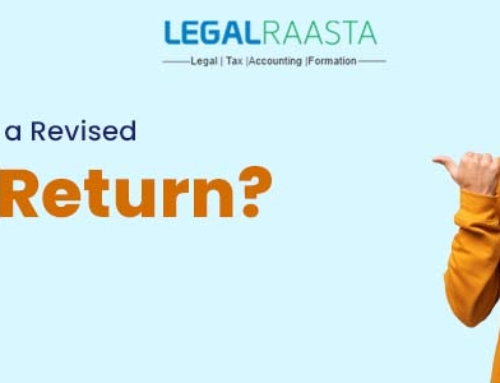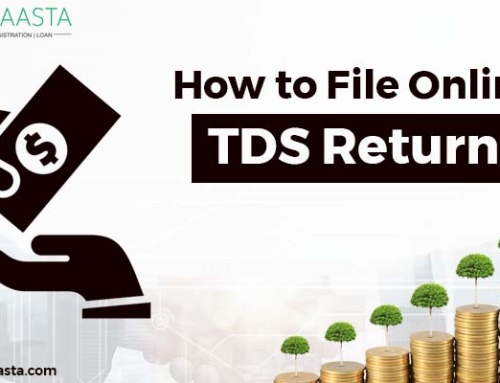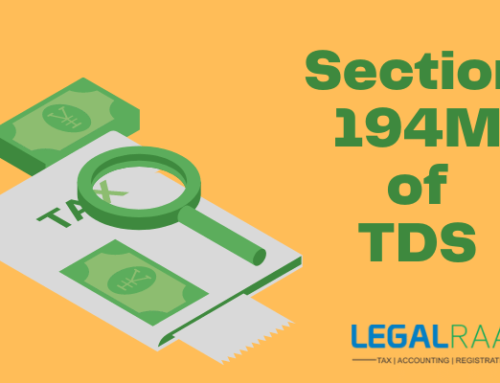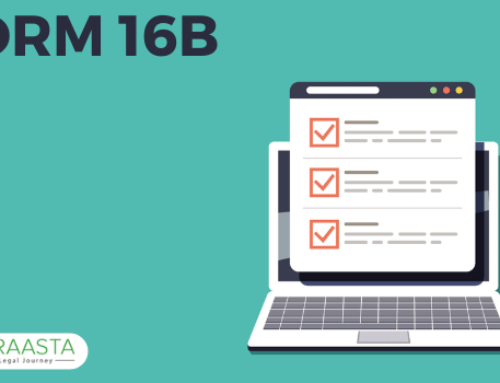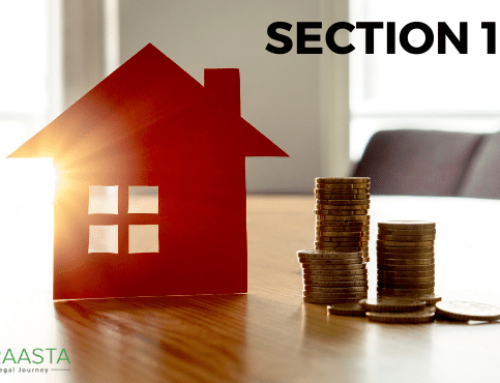According to the rules and regulations of Section 194J of the Income Tax Act, 1961, when certain payments are made to a specified resident, a person must deduct their Tax Deducted at Source (TDS) alone at the rate of 10%.
TDS (tax deduction at source) has shown to be a highly effective method of collecting taxes in the country by focusing on the source of income. It also makes it easier for people to pay their taxes when it comes time to file their tax returns. This is because they are given credit for taxes deducted at the source.
Professional fees, often known as fees for technical services, are one of the most important and typical types of payments made by a business. Professional fees include those paid to a lawyer, doctor, engineer, architect, chartered accountant, interior decorator, and others. Technological services include management, technical, and consulting services, for example. Payments made to residents are covered by Section 194J.
Payments that are covered by Section 194J
Contents
- Payments that are covered by Section 194J
- Services for Professionals
- Technical Support
- Fees for non-competition
- Royalty
- Cases in Point
- Section 194J on TDS Highlights
- Obtaining TDS at a Reduced Cost
- Section 194J establishes a time limit for depositing TDS.
- Limit on how much tax can be deducted
- Those who are required to deduct taxes
- Rate of Tax Deduction Under Section 194J
- Deduction Period Under Section 194J
- Consequences of not deducting or deducting late
- The deadline for filing a tax return has passed.
- Frequently Asked Questions
Individuals should deduct TDS at a rate of 10% when making the following payments to residents in a fiscal year (above Rs.30,000):
- The amount charged as a fee for professional services
- Amount charged as a service fee for technical assistance
- • Non-compete fee under Section 28(VA) of the Internal Revenue Code
Services for Professionals
- It refers to a medical, architectural, legal, medical, or engineering professional’s services. Additional services include accounting, interior design, advertising, technical consultation, and any other profession recognised by the Board under Section 44AA.
- Other services covered by Section 44AA include film artists, business secretaries, and authorised representatives, as well as athletes, event organizers, commentators, anchors, umpires and referees, coaches and trainers, physiotherapists, team physicians, and sports columnists.
Technical Support
It is a term that describes a person’s consulting, technical, or managerial services.
Because the income from assembly, mining, and building would be included in the recipient’s head salary, they are not considered technical services.
Fees for non-competition
The amount paid in cash or in kind in exchange for an agreement prohibiting the person from sharing any patent, licence, franchise, trademark, know-how, commercial or business rights, technique, or information that could be used elsewhere for manufacturing, processing, or any other provisional service is referred to as non-compete fees for Section 194J.
Royalty
A royalty is a payment made in exchange for
- the sale of an invention, a secret formula, a model, a design, a trademark, or a patent.
- Making use of a new idea, a prototype, a patent, and so forth.
- Disseminating information about how to use an invention, patent, recipe, or other such object.
- The right to utilize the equipment for industrial, scientific, or commercial purposes.
- There will be no monetary compensation for the sale, presentation, or distribution of literary works, scientific findings, films, or videotapes for radio broadcasting.
Cases in Point
TDS deductions are also available under Section 194J, as established by the department’s case laws and circulars:
- Hospitalized medical care is available.
- Professional fees are charged by advertising companies to film artists.
- Amount paid to HR consulting agencies and recruitment firms.
- Companies pay registrants for their information.
Section 194J on TDS Highlights
- Under Section 194J, the maximum limit is Rs.30,000, which applies to each item or payment separately.
- Commissions, remuneration, or fees paid to a company’s director are subject to TDS under this section, even if the amount is not included in the primary salary. In other cases, the Rs.30,000 restriction does not apply.
Obtaining TDS at a Reduced Cost
According to Section 197, the person receiving payment can request a lower TDS rate by filling out Form 13 and mailing it to the assessing officer.
If the officer accepts, the assessee receives a certificate confirming a TDS deduction.
Section 194J establishes a time limit for depositing TDS.
The following is the time limit for filing TDS under this section:
- If the government, or someone acting on its behalf, deducts TDS under Section 194J, the deposit must be made on the same day.
- In other cases, TDS can be deposited a week after the tax deduction is made at the end of the month.
- If the payment is made on the last day of the fiscal year, the TDS deposit must be made within two months of the payment’s conclusion.
- Some unique circumstances may be allowed to deduct TDS every quarter if the assessing officer approves.
Limit on how much tax can be deducted
Tax must be deducted if the amount exceeds Rs. 30,000 during the year. Payments to a director, on the other hand, are exempt from the rule. The tax must be deducted, no matter how small the amount.
Those who are required to deduct taxes
Everyone who makes a payment in the form of fees for professional or technical services is required to deduct tax at source, with the following exceptions:
- If the previous financial year’s turnover was less than Rs. 1 crore for a sole proprietorship or a HUF.
- In the case of a sole proprietorship or a HUF with a previous financial year turnover of less than Rs. 50 lakh.
To put it another way, all entities (excluding individuals and HUFs who were not audited the previous year) are required to deduct tax.
Rate of Tax Deduction Under Section 194J
- On any payment made under this provision, TDS will be deducted at a rate of 10%.
- Beginning April 1, 2020, payments for technical support fees will be subject to a 2% TDS surcharge.
- Beginning April 1, 2017, a reduced rate of 2% will be deducted from compensation made to call centre operators.
- If the payee fails to submit his PAN, a 20 percent deduction will be applied.
Deduction Period Under Section 194J
The tax should be deducted at the point of sale.
• Entering such a transaction in the books of accounts; or
• Making a complete payment for the expense.
Whichever comes first is the winner.
Services for Professionals and Technicians Examples of TDS
Mr. Jay used Mr. Veer’s professional services in fiscal year 2021-22. The first payment was made in April for Rs. 55000, and the second payment was made in December for Rs. 22000. Let’s take a look at the TDS obligation in three distinct scenarios for FY 2021-22:
- Under section 44AB, Mr. Jay is exempt from audit.
- Mr. Jay is the subject of a section 44AB audit because he used the service for personal advantage.
- In the fiscal year 2021-22, Mr. Jay is subject to a tax audit under section 44AB, and he has hired a professional for business purposes.
Case 1
Mr. Jay is not compelled to withhold tax from Mr. Veer’s payment since he is not subject to a tax audit under Section 44AB.
Case 2
Mr. Jay did do some professional work as a volunteer, but it was for personal reasons. As a result, there is no need to deduct TDS when paying for such services.
Case 3
If Mr. Jay is the subject of a Tax Audit and he uses professional services for commercial purposes, TDS of 10% at the rate of Rs. 55,000 must be deducted at the time of payment or crediting the accounts, whichever comes first. The reason for this is that the transaction exceeded the Rs. 30,000 threshold.
Similarly, because the transaction amount in the financial year exceeded the threshold limit, TDS should be withheld from all payments made to Mr. Veer. As a result, tax on the second payment of Rs. 22,000 would likewise be deducted at source.
Consequences of not deducting or deducting late
There are two implications of failing to deduct the tax or deducting the tax late:
• Disallowance of a portion of the expenditure: 30 percent of the expenditure is rejected in the year in which it is claimed (added to the profit and loss account); nevertheless, the 30 percent denied is re-allowed in the year in which the TDS is paid to the government.
• Interest levy till payment date: If the tax is not paid on time, interest, as well as TDS, must be paid to the government. The interest rate is calculated using the following formula:
• If no tax deduction has been made, interest will be levied at 1% each month/part of month from the due date of the tax until the due date of the tax deduction.
• Where tax has been deducted but not paid to the government, interest at the rate of 1.5 percent per month/part of the month will be charged from the date the tax was deducted to the date the tax was paid to the government.
The deadline for filing a tax return has passed.
| Deductor not paid by the government | Deductor for the government | |
| Before the 1st of March, make a payment. | 7th day after the month’s conclusion | 7th day after the month’s conclusion |
| In the month of March, you made a payment. | 30th of April | The tax is paid to the payee on the date of payment, but the challan must be deposited by the 7th day after the month’s end. |
Frequently Asked Questions
What is the best way to figure out how much tax I’ve deducted under section 194J?
Form 16 from the deductor or Form 26AS from TRACES or the income tax filing website can be used to examine your TDS details.
Is section 194J applicable to the payment of a company’s director’s remuneration?
The company’s director provides management services. As a result, any payment due or received to the director in the form of sitting fees, remuneration, or any other item (other than a salary) will be subject to the restrictions of section 194J. Technical service costs are subject to a 2% TDS since managerial services are technological in nature.
Professional services were valued Rs. 10,000 for the first time in a financial year, and Rs. 50,000 for the second. How much TDS should be deducted if the transaction amount exceeds the threshold limit?
Because the limit was not exceeded for the first time, no TDS should be deducted at Rs. 10,000. However, the transaction value exceeds the Rs. 30,000 threshold limit while making a second payment (for professional services). As a result, TDS on the full sum of Rs. 60,000 will be deducted at a rate of 10%.
Read, also: Section 194I- TDS on Rent
Section 194A TDS on Interest apart from Interest on Securities

